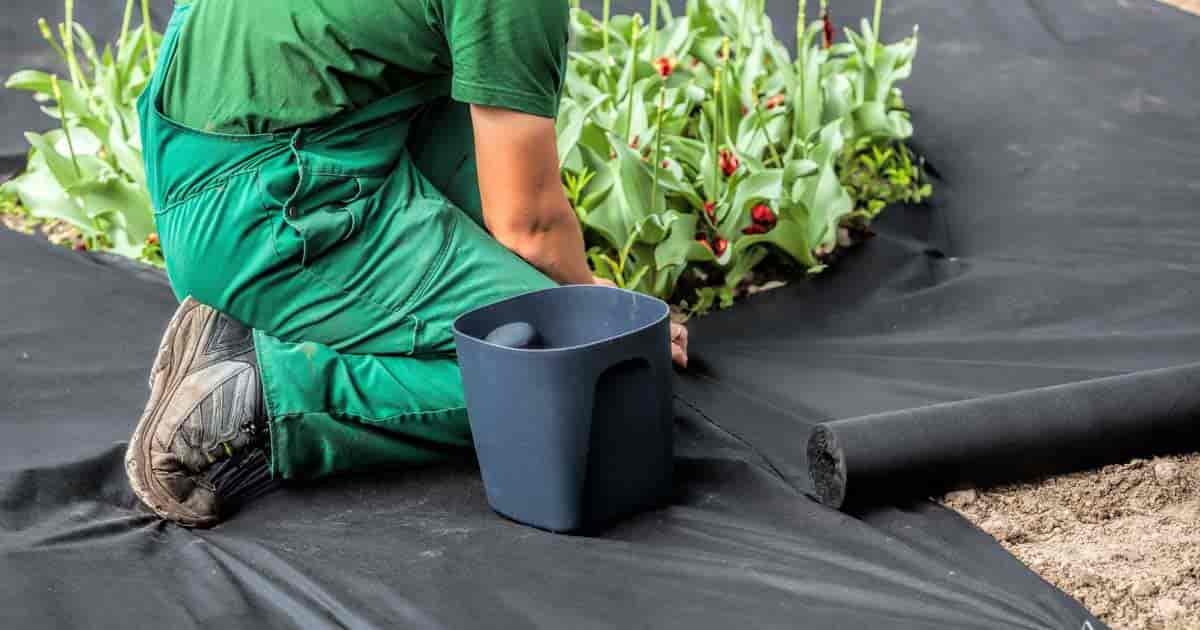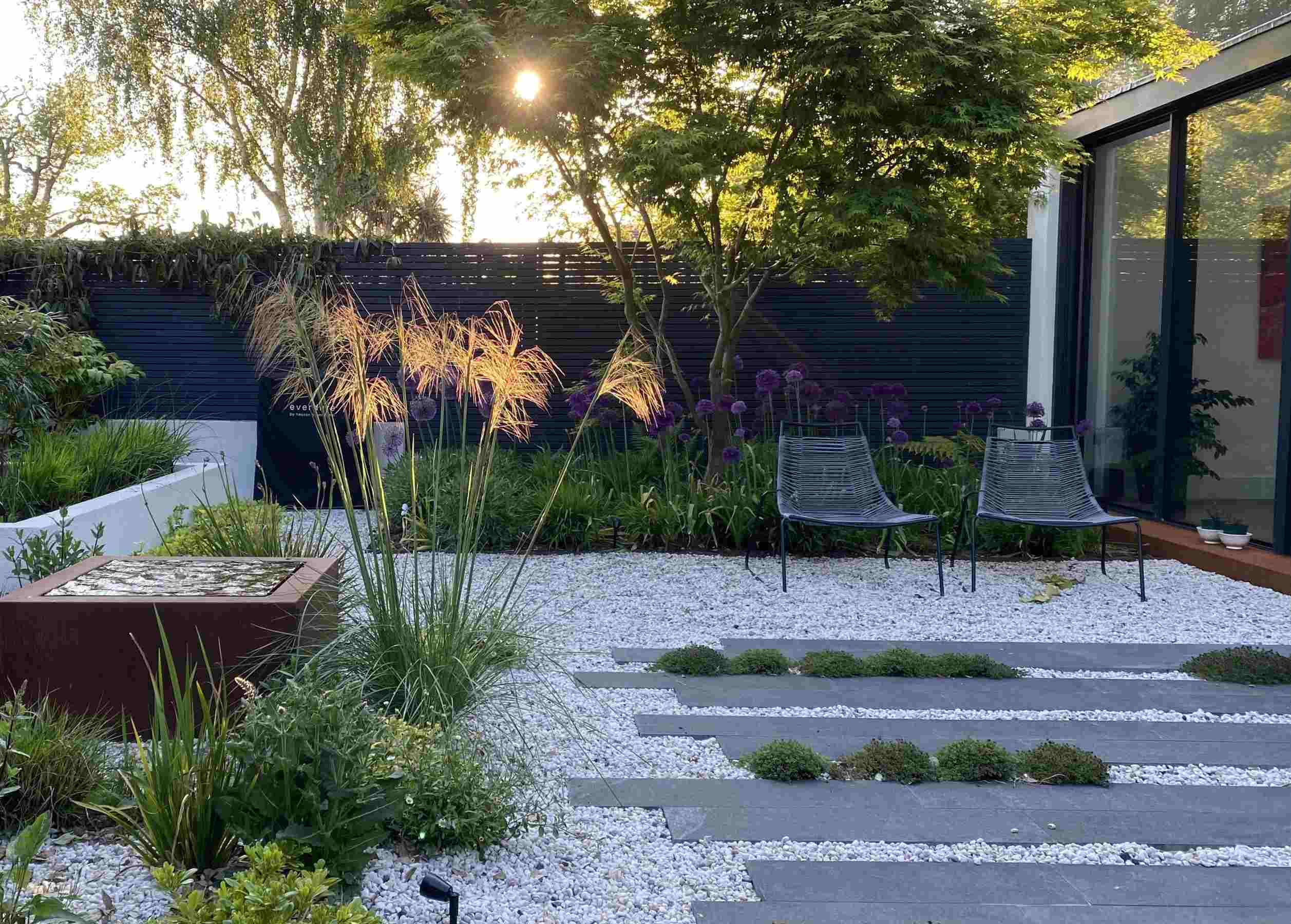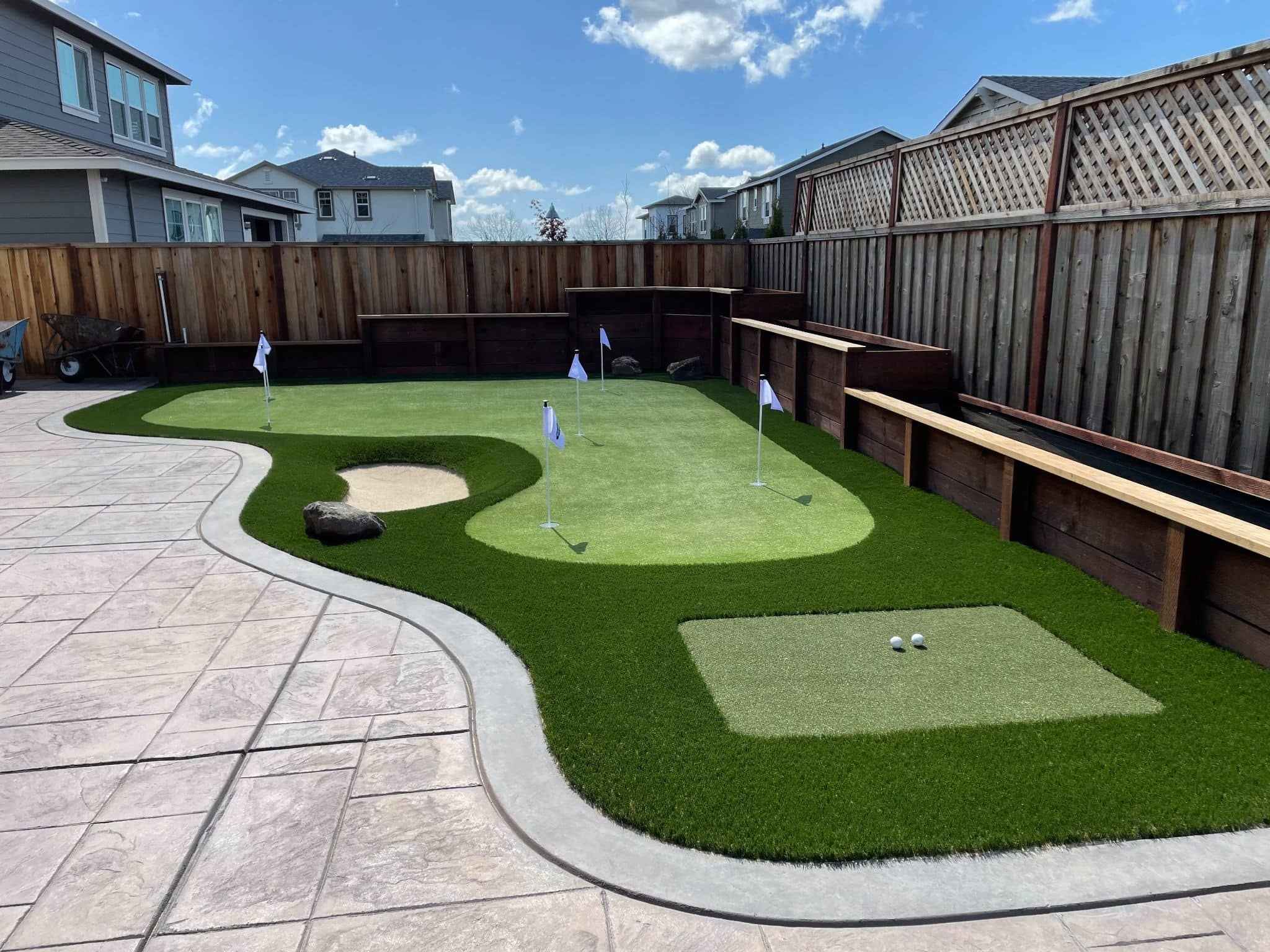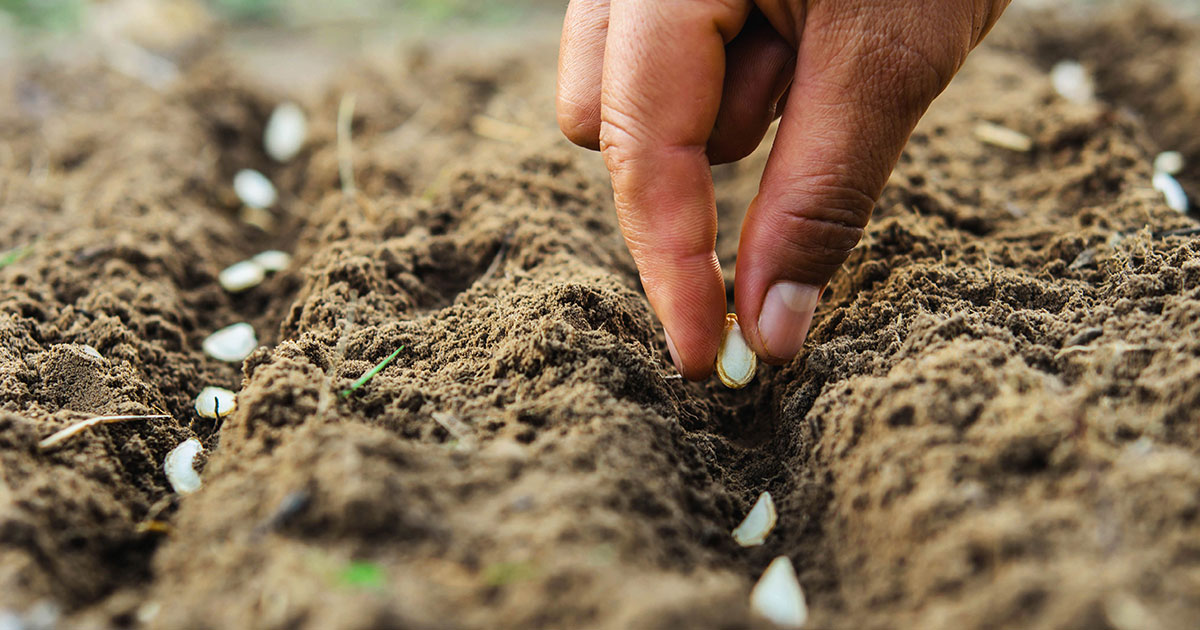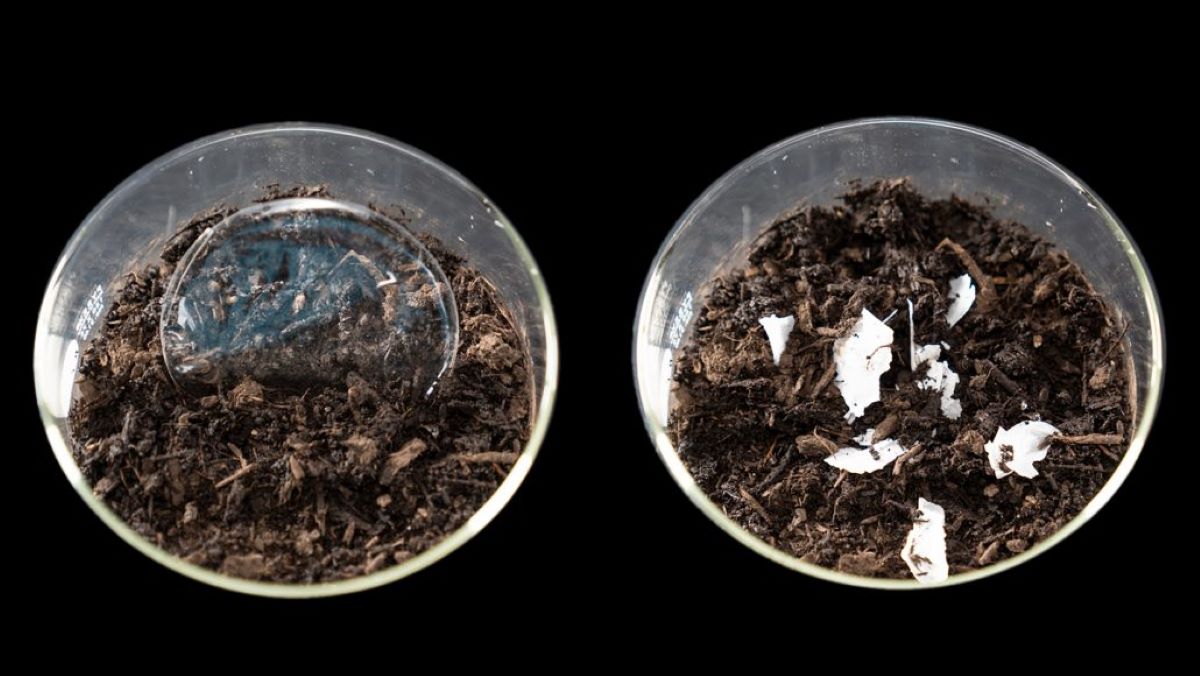Home>Gardening Tips and Tricks>Eco-Friendly Gardening>How To Put Compost In Garden


Eco-Friendly Gardening
How To Put Compost In Garden
Modified: February 9, 2024
Learn how to incorporate compost in your garden for eco-friendly gardening. Discover the benefits of composting and how to apply it effectively.
(Many of the links in this article redirect to a specific reviewed product. Your purchase of these products through affiliate links helps to generate commission for Chicagolandgardening.com, at no extra cost. Learn more)
Table of Contents
Introduction
Welcome to the wonderful world of eco-friendly gardening! If you’re passionate about gardening and helping the environment, eco-friendly gardening techniques are the perfect way to combine your interests. One of the key practices in eco-friendly gardening is using compost to nourish your garden soil. Compost is a nutrient-rich, organic matter that improves soil structure, enhances water retention, promotes healthy plant growth, and reduces the need for chemical fertilizers.
In this article, we’ll explore the benefits of using compost in the garden, discuss how to choose the right compost, and provide step-by-step instructions on how to apply it to your beloved plants. Whether you have a small window garden or a spacious backyard, composting is a fantastic way to play your part in creating a greener and more sustainable world.
Not only does composting help reduce waste going to landfills, but it also closes the loop in the natural cycle of decomposition and nutrient cycling. By recycling organic materials like kitchen scraps and yard waste, you can create your very own “black gold” – a nutrient-rich compost that will feed your plants and improve the overall health of your garden.
So, let’s get our hands dirty and dive into the world of eco-friendly gardening by discovering the benefits and techniques of using compost in your garden. By the end of this article, you’ll be armed with all the information you need to start composting and nurturing your plants with the power of nature’s own fertilizer. Let’s get started!
Benefits of Using Compost in the Garden
Using compost in your garden offers a wide range of benefits that contribute to the overall health and productivity of your plants. Let’s take a look at some of the key advantages:
- Nutrient-rich soil: Compost is packed with essential nutrients like nitrogen, phosphorus, and potassium, which are vital for plant growth. By incorporating compost into your garden, you provide a steady source of these nutrients, promoting healthier and more robust plant development.
- Improved soil structure: Compost helps improve soil structure by enhancing its ability to retain moisture while allowing proper drainage. It loosens compacted soil, creating channels for air and water to reach the plant roots, ensuring they receive the necessary oxygen and hydration.
- Increase in beneficial microorganisms: Compost is teeming with beneficial microorganisms, such as bacteria, fungi, and earthworms, which aid in breaking down organic matter and releasing nutrients into the soil. These microbes also help control harmful pathogens, resulting in a healthier and more balanced ecosystem in your garden.
- Reduction in chemical reliance: By enriching your garden soil with compost, you reduce the need for chemical fertilizers and pesticides. The natural nutrients in compost provide a sustainable and organic alternative, minimizing the environmental impact and potential harm to beneficial insects and pollinators.
- Water conservation: Compost improves soil’s water-holding capacity, allowing it to retain moisture for longer periods. This reduces the frequency of watering, conserving water resources and saving you time and effort in garden maintenance. Additionally, the improved soil structure helps prevent soil erosion, keeping water where it’s needed most – around the plant roots.
- Reduced waste: Composting is an excellent way to divert organic waste from the landfill. By recycling kitchen scraps, yard trimmings, and other organic materials, you not only reduce waste but also contribute to the reduction of harmful greenhouse gas emissions.
These are just a few of the many advantages of incorporating compost into your gardening routine. From providing essential nutrients and improving soil structure to promoting a more sustainable approach to gardening, composting is a valuable practice that benefits both your garden and the environment.
Choosing the Right Compost
When it comes to choosing the right compost for your garden, there are a few factors to consider. Here are some guidelines to help you make an informed decision:
- Source and quality: Look for compost that comes from reliable and reputable sources. It’s essential to choose compost that has undergone proper decomposition and is free from contaminants such as pesticides or herbicides. Consider purchasing compost from local garden centers, farmers markets, or trusted compost suppliers.
- Organic vs. synthetic: Opt for organic compost that is made from natural materials, such as vegetable scraps, leaves, grass clippings, and coffee grounds. Synthetic compost may contain chemicals and additives that can harm your plants or disrupt the natural balance of your garden ecosystem.
- Texture and consistency: The ideal compost should have a crumbly texture and be well-aged. Avoid compost that appears overly wet, foul-smelling, or has large chunks of undecomposed materials. It’s best to choose compost that has a balanced mix of ingredients, as this will provide a wider range of nutrients for your plants.
- Compost testing: Consider having your compost tested for nutrient content, pH levels, and potential contaminants. This can give you valuable insights into the quality of the compost and help you determine if any amendments are necessary to meet the specific needs of your plants.
- DIY composting: If you prefer to create your own compost, ensure that you follow proper composting techniques. Use a mix of green materials (nitrogen-rich) and brown materials (carbon-rich), maintain the correct moisture levels, and regularly turn the compost pile to ensure proper decomposition. Homemade compost allows you to have complete control over the ingredients and quality of the compost.
Ultimately, choosing the right compost for your garden is about finding a balance between quality, sustainability, and the specific needs of your plants. By selecting a high-quality, organic compost, you provide your garden with the best possible nourishment while minimizing any potential negative impacts on the environment or your plants’ health.
Preparing the Garden for Compost
Before applying compost to your garden, it’s important to prepare the soil to create the optimal environment for the compost to thrive. Here are the steps to get your garden ready:
- Clear the area: Remove any weeds, rocks, or debris from the garden bed. This will create a clean and clear space for the compost to be applied.
- Loosen the soil: Use a garden fork or a tiller to loosen the soil in the designated area. Loosening the soil allows for better absorption of moisture and nutrients, ensuring the compost can penetrate deeply.
- Test the soil: Conduct a soil test to determine the pH level and nutrient deficiencies in your soil. This will help you identify any amendments that may be necessary to create an optimal growing environment.
- Amend the soil, if needed: Based on the results of the soil test, add any necessary soil amendments such as lime to adjust the pH level or organic fertilizer to correct nutrient deficiencies. Follow the recommended application rates for your specific soil type.
- Add organic matter: Incorporate organic matter, such as well-rotted compost or aged manure, into the soil. This will further improve soil structure, drainage, and nutrient availability. Spread a layer of organic matter over the garden bed and use a garden fork or hoe to work it into the soil, aiming for a depth of 6 to 8 inches.
- Level and smooth the soil: Rake the soil surface to level it and create a smooth and even bed for the compost application. This will provide a consistent and uniform environment for the compost to be applied.
By following these steps, you will ensure that your garden is well-prepared to receive the benefits of compost. The cleared and amended soil will provide an ideal foundation for the compost to work its magic, nourishing your plants and promoting healthy growth.
Applying Compost to the Garden
Now that your garden is prepared, it’s time to apply the compost and reap its benefits. Here’s how to go about it:
- Calculate the amount needed: Determine the amount of compost you’ll need by considering the size of your garden bed and the recommended application rate. Typically, a layer of compost around 1 to 2 inches thick is sufficient for most plants.
- Spread the compost: Evenly distribute the compost over the soil surface using a shovel or a garden rake. Spread it in a layer, making sure to cover the entire garden bed. Avoid piling large mounds of compost as this can create an uneven application.
- Avoid contact with plant stems: Keep the compost away from the base of plant stems to prevent rot or disease. Leave a gap of a few inches between the compost and the stem of each plant to allow for proper air circulation.
- Work compost into the soil: For new plantings, gently work the compost into the top few inches of the soil. This allows the nutrients to be closer to the plant roots. For established plants, you can simply apply the compost as a top dressing layer.
- Water the compost: After applying the compost, water the garden thoroughly. This helps to settle the compost into the soil and activates the nutrient release process. Aim to keep the soil consistently moist but not waterlogged.
- Repeat regularly: It is beneficial to reapply compost annually or as needed to maintain the fertility of your soil. A yearly application of compost will help replenish nutrients and maintain a healthy balance in the garden.
Remember, applying compost is a simple yet effective process that can have remarkable benefits for your garden. Whether you’re starting seedlings or maintaining established plants, incorporating compost into your garden will provide a natural and nutrient-rich environment that promotes optimal plant growth and overall garden health.
Mixing Compost with Soil
Incorporating compost into your garden soil is a key step in maximizing its benefits. Mixing compost with soil ensures that its nutrients are evenly distributed and readily available to your plants. Here’s how to effectively mix compost with soil:
- Prepare the planting area: Clear the area of any weeds or debris and loosen the soil using a garden fork or a tiller. This will create a soft and workable surface for mixing the compost.
- Add compost: Spread a layer of compost over the soil, aiming for a thickness of about 2 to 3 inches. If you’re unsure of the amount, you can use a garden calculator to estimate the quantity needed based on the dimensions of your planting area.
- Work the compost into the soil: Use a garden fork or a garden tiller to mix the compost into the soil thoroughly. Work the compost to a depth of about 6 to 8 inches, ensuring it is evenly incorporated. This will help distribute the nutrients and improve the overall fertility of the soil.
- Break up clumps: While mixing the compost and soil, break up any clumps or large chunks of compost to ensure a uniform blend. This will facilitate even nutrient distribution and prevent any uneven pockets of compost in the soil.
- Ensure proper moisture: After mixing the compost with the soil, water the area lightly to help settle the soil and promote initial nutrient release. However, avoid overwatering, as excessive moisture can lead to poor drainage and compacted soil.
- Monitor the soil: Keep an eye on the moisture level and adjust watering as needed. Regularly check the soil to ensure it remains loose, well-drained, and fertile. The compost will continue to break down over time, enriching the soil with valuable nutrients.
Mixing compost with soil is a simple yet essential step in creating a healthy and nutrient-rich growing environment for your plants. By ensuring that the compost is thoroughly incorporated into the soil, you can maximize its benefits and set the foundation for successful plant growth.
Watering and Maintaining the Compost
Proper watering and maintenance are crucial to ensure that your compost functions optimally and provides the best nourishment for your garden. Here are some key tips for watering and maintaining your compost:
- Keep the compost moist: Compost should be kept consistently moist, similar to a wrung-out sponge. Regularly check the moisture level and water the compost as needed. If it feels dry, water it lightly to maintain the ideal moisture content. However, avoid overwatering, as excessive moisture can lead to anaerobic conditions and a stagnant compost pile.
- Avoid waterlogging: Ensure proper drainage in your compost pile or bin to prevent waterlogging. Adequate drainage allows excess water to flow out, preventing the compost from becoming overly saturated. Consider using a compost bin, raised bed, or ensuring that your compost pile is constructed on a slight slope.
- Turn the compost occasionally: Turning the compost pile or mixing the compost in the bin periodically helps aerate the pile and accelerate the decomposition process. Use a garden fork or a compost turning tool to gently turn the compost, bringing the outer layers inward and the inner layers outward. This promotes even decomposition and helps prevent unpleasant odors.
- Check for proper decomposition: Regularly inspect your compost for signs of decomposition. Mature compost should have a dark, crumbly texture and a pleasant earthy smell. It should no longer resemble the raw materials that went into it. If your compost hasn’t fully decomposed, continue turning the pile and providing proper moisture for ongoing decomposition.
- Balance the compost ingredients: Maintain a good balance between green (nitrogen-rich) and brown (carbon-rich) materials in your compost. Aim for a ratio of roughly 3 parts brown materials to 1 part green materials. This helps create the right conditions for decomposition and ensures a balanced nutrient profile in the resulting compost.
- Compost cover and insulation: Consider using a cover or insulation on your compost pile to help retain moisture and regulate temperature. A cover helps prevent excess evaporation and keeps the moisture levels more stable. Insulation, such as straw or shredded leaves, can help retain heat and accelerate the decomposition process, particularly during colder months.
- Additions to the compost: As you accumulate additional kitchen scraps or yard waste, continue to add them to your compost pile. Aim for a balance of both nitrogen-rich (e.g., fruit and vegetable scraps, coffee grounds) and carbon-rich (e.g., dry leaves, shredded paper) materials. This ensures a steady supply of nutrients and maintains the carbon-to-nitrogen ratio of the compost pile.
By following these guidelines, you can effectively water and maintain your compost, ensuring optimal decomposition and nutrient availability. Consistent moisture, proper aeration, and a balanced mix of ingredients will contribute to the long-term success of your compost and provide nutrient-rich compost for your garden plants.
Using Compost as Mulch
Compost can be used as a fantastic organic mulch in your garden, providing numerous benefits to your plants and soil. Here’s how you can effectively utilize compost as mulch:
- Prepare the area: Clear the area of any weeds or debris and ensure that the soil is moist. This will create a clean and suitable base for the compost mulch.
- Apply a layer of compost: Spread a layer of compost around your plants, aiming for a thickness of around 2 to 3 inches. Avoid direct contact with the plant stems to prevent rot or disease. Leave some space around the base of each plant for proper air circulation.
- Extend the mulch area: Expand the mulch area to cover the entire root zone of your plants. This helps conserve moisture, suppress weeds, and regulate soil temperatures for optimal plant growth.
- Replenish as needed: Over time, the compost mulch will decompose and break down. Monitor the thickness of the mulch layer and replenish it as necessary to maintain a consistent depth.
- Insulate and retain moisture: The compost mulch acts as an insulation layer, moderating temperature fluctuations and protecting the soil from extreme heat or cold. It also helps retain moisture, reducing the need for frequent watering and conserving water resources.
- Suppress weed growth: The thick layer of compost mulch acts as a natural barrier, suppressing weed growth by blocking sunlight and smothering weed seedlings. This reduces the need for tedious weed removal and makes garden maintenance more manageable.
- Improve soil structure and fertility: As the compost mulch breaks down, it gradually releases nutrients into the soil, enriching it and improving fertility. It also enhances soil structure, promoting aeration, drainage, and the activity of beneficial soil microbes.
- Enhance aesthetics: In addition to its functional benefits, compost mulch can also enhance the overall aesthetics of your garden. The dark, rich color of the compost adds visual appeal and provides a neat and finished look to your plant beds.
Using compost as mulch is a sustainable and eco-friendly way to nurture your plants and improve your garden. By harnessing the power of compost, you can create a nurturing environment that promotes plant health, conserves water, and reduces the need for synthetic fertilizers and herbicides.
Troubleshooting Compost Issues
While composting is generally a straightforward process, you may encounter some common issues along the way. Here are some troubleshooting tips to help you address these problems:
- Compost not decomposing: If your compost is not decomposing as expected, it may be due to a lack of moisture, improper carbon-to-nitrogen ratio, or inadequate aeration. Make sure your compost pile is moist but not waterlogged, maintain a balance of green and brown materials, and turn the pile regularly to introduce airflow.
- Foul odor: A foul smell coming from your compost pile may be a sign of anaerobic conditions or excess moisture. Ensure proper aeration by turning the pile regularly and add dry brown materials to balance excess moisture. Avoid adding meat, dairy, or oily/greasy food scraps, as these can cause odor issues.
- Pest or wildlife attraction: If your compost pile is attracting pests or wildlife, it may be due to food scraps that are not buried deep enough or lack of proper cover. Ensure that food waste is covered by a layer of carbon-rich materials, such as leaves or straw. Consider using a secure compost bin to deter animals.
- Unpleasant appearance: If your compost pile looks messy or unattractive, it may be due to improper layering or lack of turning. In the future, layer your compost pile with alternating green and brown materials and turn it regularly to ensure proper decomposition and a more aesthetically pleasing appearance.
- Long decomposition time: If your compost is taking longer than expected to decompose, it may be due to a lack of nitrogen-rich materials, insufficient turning, or low temperatures. Make sure to balance your compost pile with a mix of green and brown materials, turn it regularly to introduce oxygen, and consider insulating it with straw or leaves to accelerate decomposition during colder months.
- Excessive heat: If your compost pile is generating excessive heat, it may indicate an imbalance in the carbon-to-nitrogen ratio or too much moisture. To cool down the pile, add more carbon-rich materials and turn it more frequently to introduce air and promote proper decomposition.
Remember that composting is a dynamic process, and it may take some time and adjustments to achieve the desired results. By troubleshooting any issues that arise and making necessary adjustments, you can overcome challenges and create a healthy, nutrient-rich compost for your garden.
Final Thoughts and Tips
As you embark on your journey of eco-friendly gardening with compost, here are some final thoughts and tips to keep in mind:
- Patience is key: Composting is a natural process that takes time. Be patient and allow the compost to decompose properly before using it in your garden. The end result will be well worth the wait.
- Diversify your compost ingredients: To create nutrient-rich compost, use a variety of organic materials such as kitchen scraps, yard waste, leaves, grass clippings, coffee grounds, and shredded paper. This will provide a balanced mix of nutrients and help maintain a healthy compost ecosystem.
- Monitor compost temperature: Ideal composting temperatures range between 120-160°F (49-71°C). Use a compost thermometer to monitor the temperature and ensure it stays within this range. Adjust the carbon-to-nitrogen ratio and turning frequency if needed.
- Protect beneficial organisms: Avoid using chemicals and pesticides around your garden and compost pile. These can harm the beneficial microorganisms that are essential for decomposition and soil health.
- Compost all year round: Composting is not limited to the warmer months. You can compost all year round by adjusting your composting technique, insulating the pile, and using materials that are readily available during different seasons.
- Combine compost with other organic practices: Composting is just one piece of the eco-friendly gardening puzzle. Combine it with other sustainable practices like water conservation, pest control using natural methods, and planting native species to maximize the benefits for your garden and the environment.
- Keep learning and experimenting: Gardening is a continuous learning process. Stay curious, explore new techniques, and experiment with different composting methods and materials. Each season presents an opportunity to improve and refine your composting practices.
By incorporating these final thoughts and tips into your gardening journey, you can harness the true power of composting and create a thriving and eco-friendly garden. Enjoy the process, connect with nature, and witness the rewards of sustainable gardening with the help of compost.


